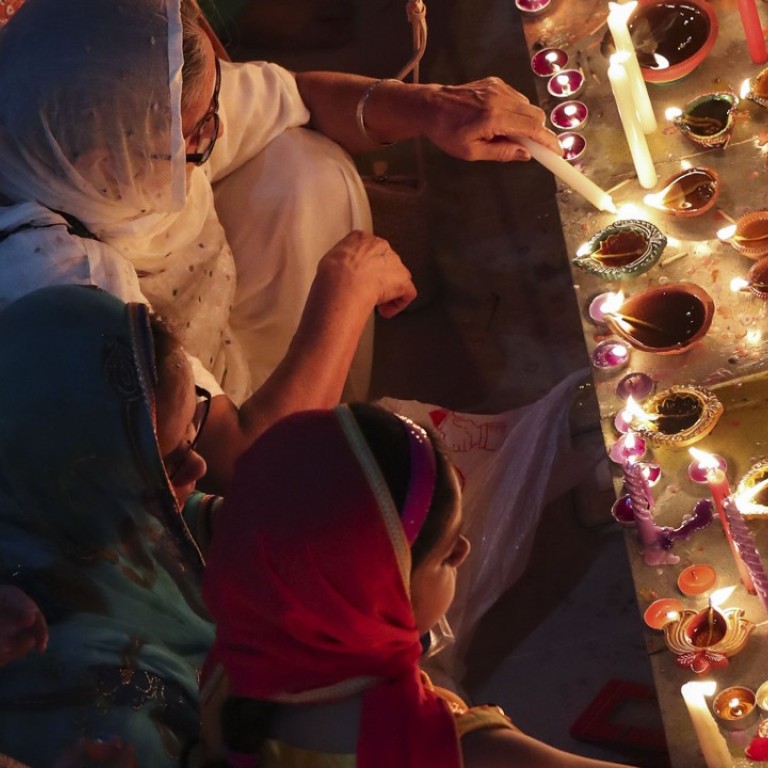
Diwali: how Indians in Hong Kong make festival special when they’re far away from families
- Multi-faith Diwali balls and assemblies at schools, filling their homes with friends in place of family – Indian community celebrates differently
- Indian firms’ Chinese staff take part in lucky coins ritual
The festival of Diwali, the Indian New Year, is celebrated nationwide in India and by hundreds of millions of Indians around the world, and with gusto in Hong Kong. Derived from the Sanskrit word Deepawali, meaning row of lamps, the “Festival of Lights” is observed in the autumn, and will be celebrated on November 7 this year.
Preparations for the festival begin weeks in advance. The home and workplace are adorned with earthen lamps called diyas, which symbolise the triumph of light over darkness. This is summarised in the prayer Tamso Ma Jyotirgamaya, which says “from the darkness of ignorance, lead us to light of knowledge”.
Diwali’s Hindu haze and a weird debate
Over time, Diwali had become a national festival marked by most Indians regardless of faith, with Jains, Buddhists and Sikhs also celebrating. In Jainism, Diwali marks the spiritual awakening of Lord Mahavira, and for Sikhs it celebrates the day the sixth guru, Guru Hargobind, was freed from imprisonment.
How Hindus interpret the Diwali story depends on where they live. In northern India, it marks the story of King Rama’s return to the Indian city of Ayodhya after he defeated Ravana by lighting rows of clay lamps. In the south, people celebrate it as the day Lord Krishna defeated the demon Narakasura. In western India, the festival marks the day Lord Vishnu sent the demon King Bali to rule the netherworld.
Despite the variations, a common symbolism remains – the victory of light over darkness, knowledge over ignorance, and good over evil.
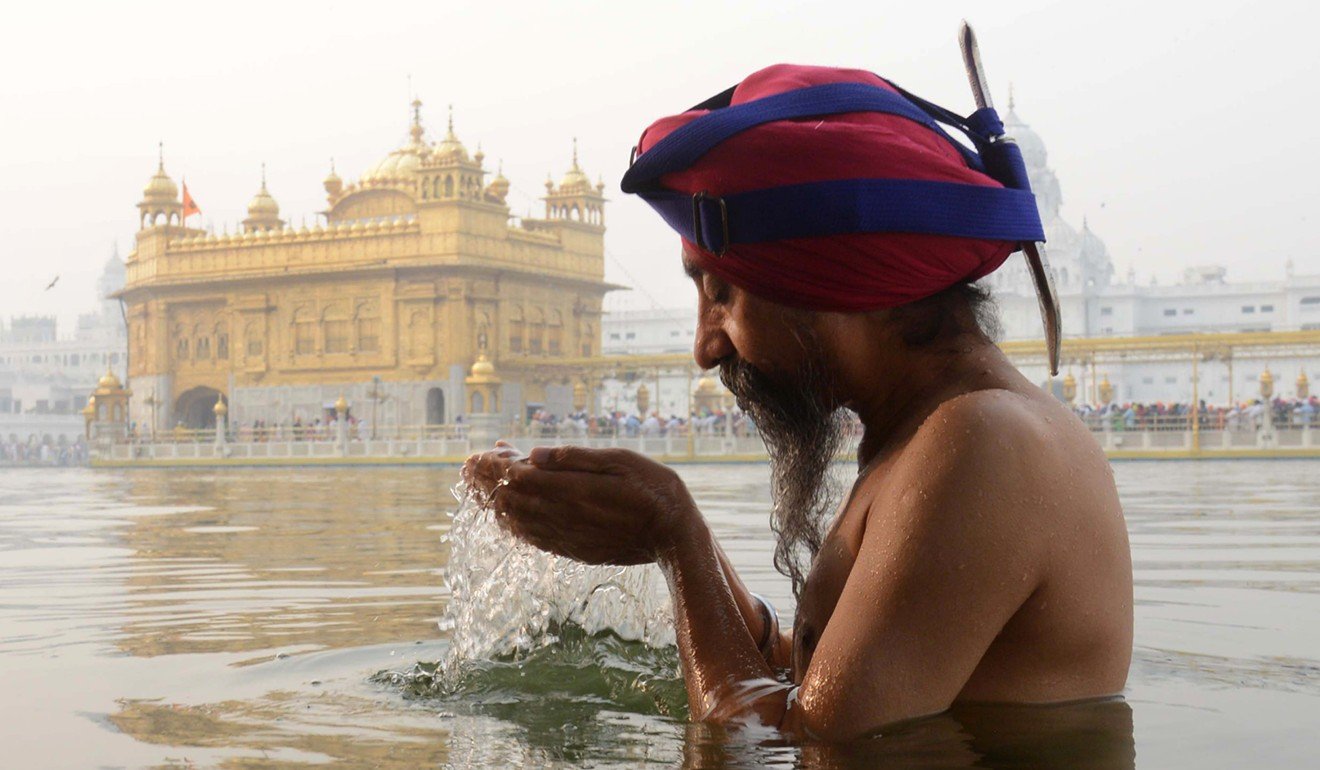
With this in mind, people ensure their homes are cleaned and often decorated with rangoli artwork (patterns made from coloured powders and ground rice powder, commonly depicting a lotus leaf); new clothes are worn; Indian confectionery is shared among family and friends; and diyas are placed around the home to prepare for new beginnings.
The festivities in India are elaborate and colourful, and Indians who move to Hong Kong to live and work have found it challenging to enjoy the festival to its fullest. Over time, however, they discover ways to make Diwali the highlight of the year – and not just for their own families.
Aparna Kanda and her husband, Rajeev Eyunni, a Telugu couple from Hyderabad living in Hong Kong, remember Diwali when they were children as a time to meet members of their extended family, be given new clothes, take part in festivities and listen to stories.
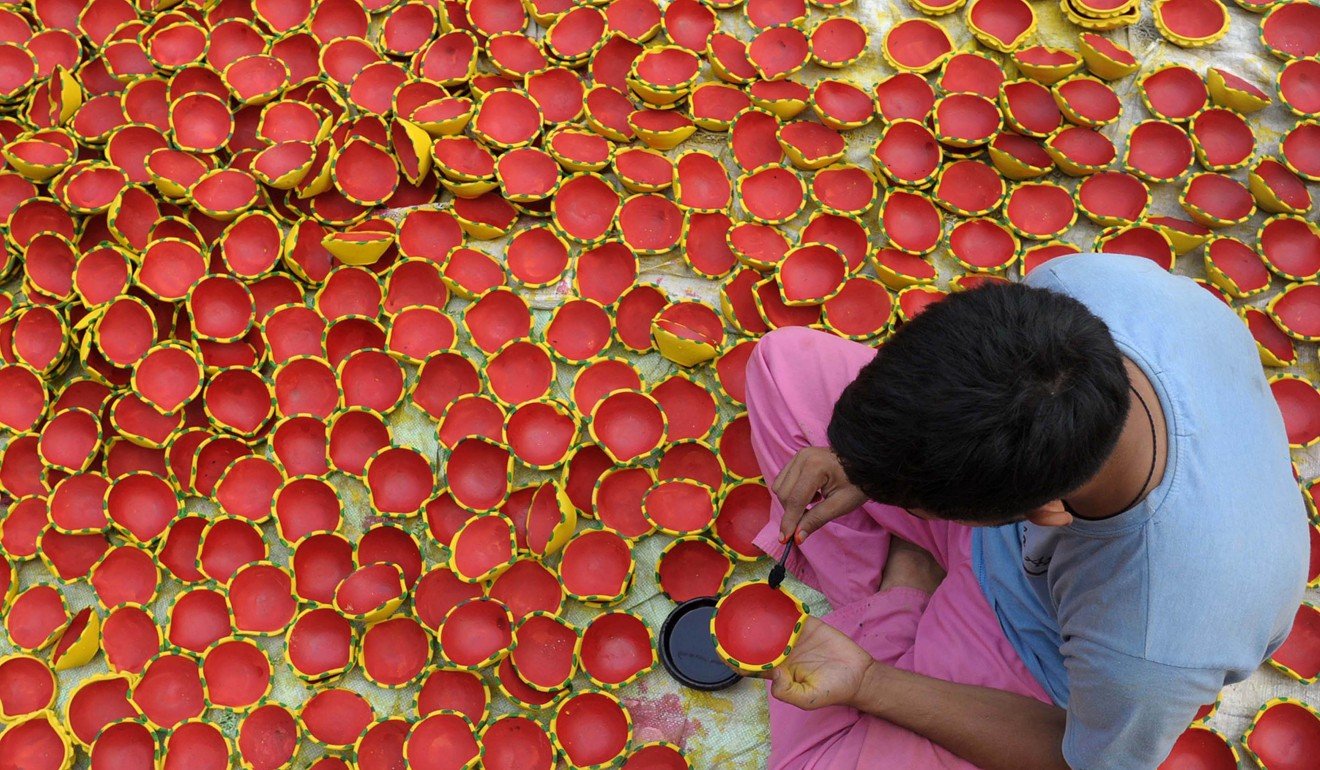
“The day before Diwali was always a traditional pil bath that signified washing off the blood of the demon Naraksura, who was killed by Lord Krishna and his wife – the triumph of good over evil. Deepawali saw us preparing for the exciting evening festivities with the lighting of diyas and the bursting of firecrackers,” Kanda says.
She explains that these days, however, children and adults in India resist setting off firecrackers for various concerns, not least the fact child labour is used in their manufacture and the severe air pollution they cause.
“My kids, along with their friends, also celebrate by chanting shlokas [prayers or sacred poems] every evening in preparation for the festive season, and enjoy the positive vibes and calming nature of these sessions, along with classical music, dance performances and interactive storytelling sessions.”
It sometimes brings tears of joy to my eyes to see non-Indian children wearing our saris … as they enthusiastically perform our traditional dance
Six years ago, Kanda took the celebrations one step further by hosting a full-school Diwali assembly at Kennedy School in Pok Fu Lam, encouraging every Indian child to take part. The assembly was a huge success and she has been organising the annual Diwali assembly, along with a supportive school leadership, ever since.
“It is lovely to share the joy of this festival with the extended school community as an opportunity to exchange and learn about each other. This leads to a culture of mutual respect and tolerance, which is more relevant in today’s troubled world than ever before, if we are to be hopeful of achieving universal peace and happiness,” she says.
Indian parents say these assemblies allow their children to unite in pride at their heritage even though they are far from home. Non-Indian parents are also grateful that their children can enjoy such a rich cultural experience. This delights Kanda, who feels that Diwali in Hong Kong is now nearly as special as it would be at home.
“When children decorate diyas in class, share stories with their friends, or eat Indian treats, it is almost as nice as being in India to celebrate Diwali. Kennedy School makes it extra special as a ‘Dress Indian Day’, so the school is a riot of colours and festivities,” she says.
Vinita and Jeetu Gurnani, a Sindhi couple from Mumbai, moved to Hong Kong after their marriage 23 years ago. With barely any family or friends in the city, Diwali celebrations were tinged with feelings of homesickness at first, but by building friendships through work and their children, they now belong to various social groups that meet monthly and hold elaborate Diwali celebrations.
“We go for religious gatherings and pujas [prayers and rituals], attend card parties, and enjoy dancing and dining with members of the community at grand Diwali balls hosted by Indian associations,” Vinita says. “By far the most special Diwali Ball we attend is the one at our children’s school – West Island School. This ball is unique because it is organised entirely by the students, from the costumes to the performances to the catering, and this makes us feel incredibly proud.”
A splash of colour to help celebrate Diwali
She is always impressed to see students from various nationalities taking part in the acting, dancing and fashion show of the school’s ball.
“It sometimes brings tears of joy to my eyes to see non-Indian children wearing our saris … as they enthusiastically perform our traditional dances. Watching them embrace our culture always leaves a lump in my throat.”
West Island School principal Chris Sammons speaks with pride about the event. “Over 20 years ago a student wanted to create a Diwali ball to celebrate diversity in our community. She produced the tickets by hand, borrowed costumes from her grandmother, and gave birth to the most talked about celebration in our school calendar.”
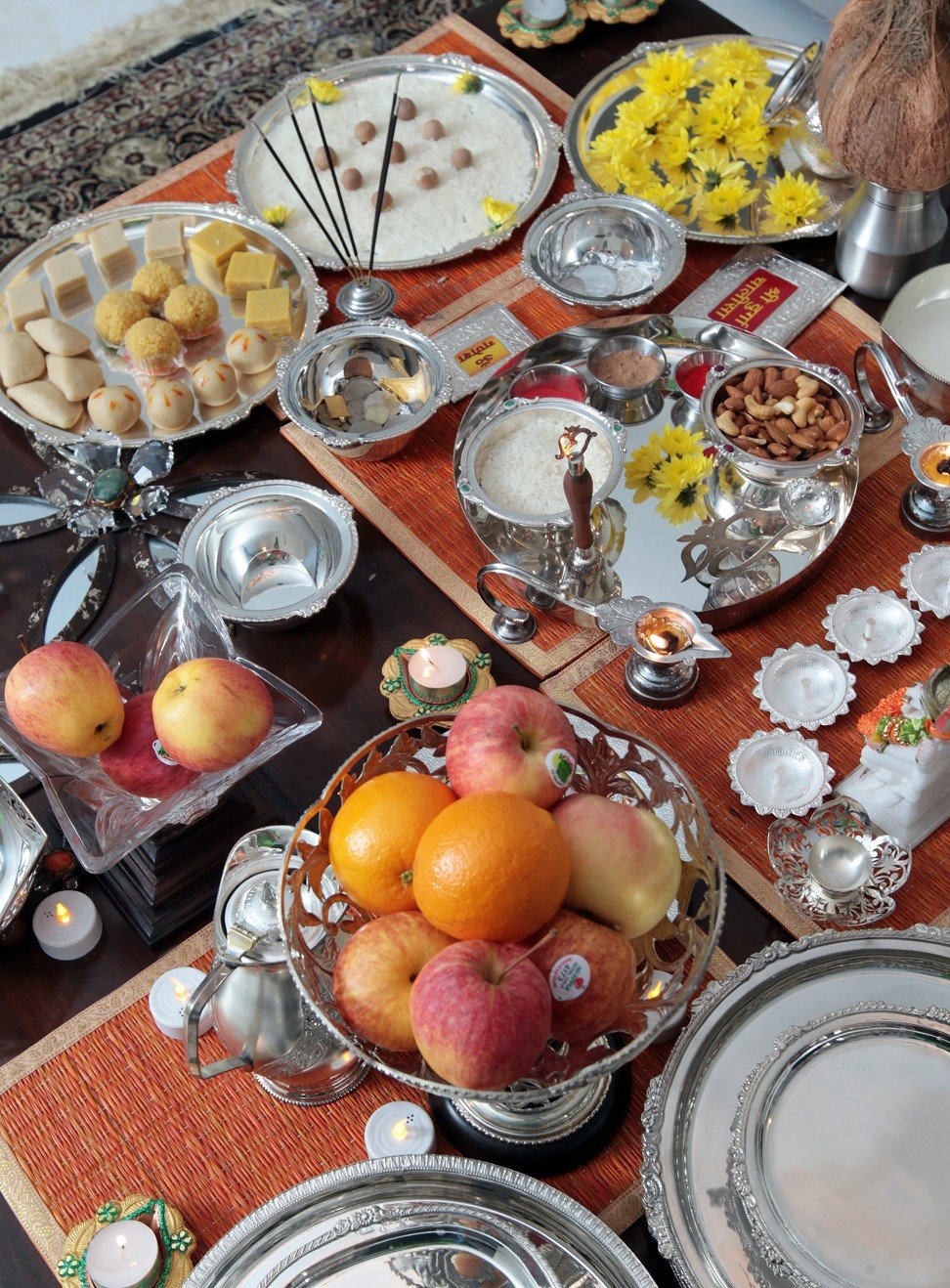
“The ball has grown into an extravaganza held over two nights and involves over 300 children, who prepare a stunning show of dance, drama and cultural appreciation. Over 11 per cent of our students are of Indian origin, yet over a third of the school will be involved in the evening, giving joy, celebration and an opportunity to be grateful for what we have in life. It is something to behold and creates strength from diversity here at West Island,” Sammons says.
Prerna and Hemant Babani, a Sindhi couple from Hyderabad, also moved to Hong Kong after getting married – in 1997. Being used to having an extended family, their first few Diwali celebrations in the city left them feeling low, despite being fortunate to have made friends very quickly.
“Even though we attended parties and Diwali balls with friends, something was still missing. We realised that we just didn’t feel that the love and excitement of the new year had filled our home,” Hemant says.

In 2006, they decided to have their first house Diwali party, with 50 friends visiting their home just as their extended family would, celebrating until the early hours of the morning.
“It was such a fun-filled event, with so much love and laughter and requests for repeated parties, we knew that it was going to become an annual Diwali tradition. With each year we seem to make new friends, but we never forget our old friends, so the event has grown both in size and duration, and last year our party went on until 7am the next day,” he says.
Hemant visits his friends’ offices to wish them happiness and prosperity each Diwali, and also enjoys celebrating with his office staff, through sharing Indian mithai – confectionery and desserts – with them and inviting their families to join in with their rituals.
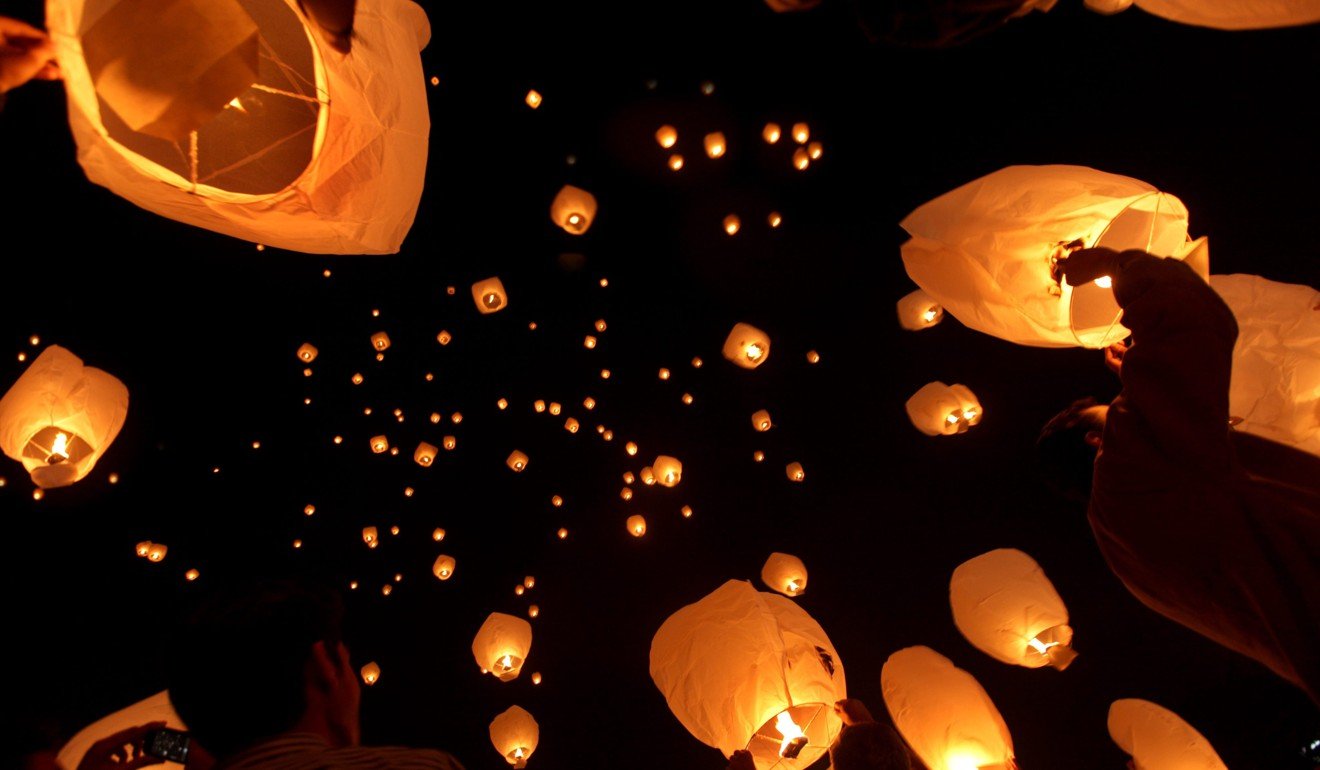
“Staff members are eager to learn more about our rituals, especially the puja of the coins, where we immerse 11 coins of different value in a mixture of milk and honey flowers. Each take it in turn to pick out a coin and touch it to their closed eyes for luck,” he says.
“My Chinese staff members and their families get a thrill out of seeing who will choose the coin of the highest value because this signifies luck for the next financial year, and the Chinese, just like the Indians, truly delight in being lucky.”

